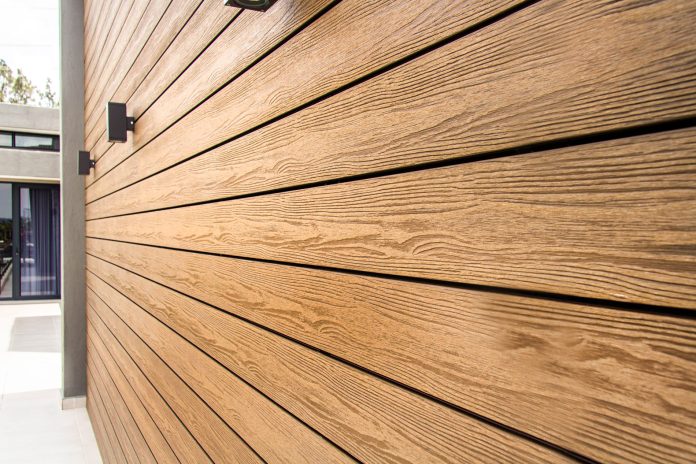In recent years, sustainable cladding is a building material that has gained popularity as a sustainable alternative to traditional wood cladding. It comprises a combination of wood fibres, plastic, and other materials; composite cladding offers a range of benefits that make it an attractive option for builders and architects alike.
Wood cladding has been used for centuries as a popular choice for building exteriors. However, traditional wood cladding has several disadvantages, including susceptibility to rot and insect damage, a high risk of fire, and a limited lifespan. Moreover, using virgin wood in construction contributes to deforestation, a primary environmental concern.
On the other hand, cladding with composite material is a more sustainable option that incorporates recycled plastic and wood fibres into its manufacturing process, reducing the amount of virgin plastic needed. It is a durable, low-maintenance, and weather-resistant material that can withstand harsh conditions, making it an ideal choice for building exteriors.
Sustainability Benefits
Manufacturers can reduce the amount of virgin plastic used by incorporating wood fibres into the composite material. Additionally, many manufacturers of cladding use recycled plastic, further reducing the product’s environmental impact. By choosing this material, builders and architects can contribute to a more sustainable future.
Durability and Weather Resistance
Its durability and resistance to weathering make it a practical choice for outdoor building applications. Unlike traditional wood cladding, cladding with composite material is not susceptible to rot or insect damage. This increased durability means that composite cladding requires minimal maintenance, saving time and money in the long run. Furthermore, it can withstand extreme temperatures, high winds, and heavy rainfall, ensuring the building’s exterior remains intact and aesthetically pleasing for years.
Design Versatility
Cladding offers a range of design options, allowing builders and architects to create a unique and modern look for building facades. It can resemble natural wood or be coloured in various hues to match a specific aesthetic. This versatility in design means that it can be used in various building styles, from contemporary to traditional. As a result, it can enhance the appearance of a building, adding to its value and curb appeal.
Fire Resistance
Traditional wood cladding is highly flammable, which can be a safety concern for buildings located in bushfire-prone areas. It is manufactured with fire-resistant materials, making it a safer option for buildings in areas with a high risk of bushfires. Choosing Cladding for buildings in high-risk areas can provide peace of mind and an added layer of protection.
Cost-Effectiveness
While the upfront cost of composite cladding may be higher than traditional wood cladding, its durability and low maintenance mean it can be a cost-effective option in the long run. Traditional wood cladding requires regular maintenance and replacement, which can add up over time. In contrast, this sustainable material requires minimal upkeep and has a longer lifespan, making it a smart investment for those looking to save money in the long term.
Ease of Installation
It is easy to install, with many manufacturers offering pre-fabricated panels that can be easily attached to a building’s frame. This ease of installation can save time and money during the building process, reducing overall construction costs. Additionally, cladding with composite material can be installed using various techniques, including screwing, nailing, or adhesives. This allows builders and architects to choose the best installation method for their projects, making the process more efficient and hassle-free.
Cladding is a sustainable, practical, and cost-effective alternative to traditional wood cladding. As the demand for sustainable building materials increases, people can expect cladding with composite material to be used more widely in the construction industry. By choosing this sustainable material, builders and architects can contribute to a more sustainable future.

